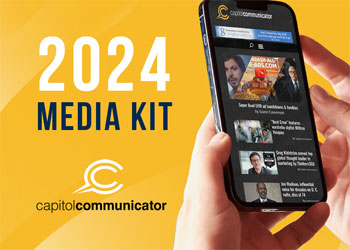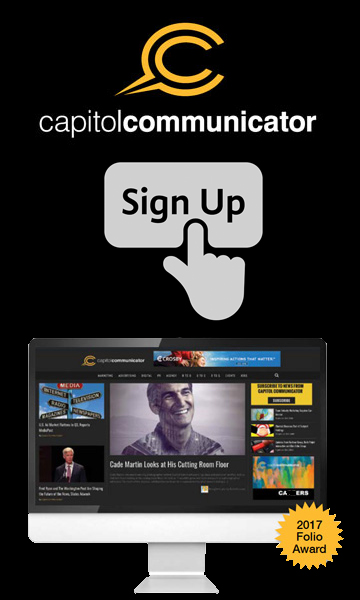By Greg Kihlström
Over the course of three articles, which you can read in Insights on the Capitol Communicator website, we have reviewed the basic of Long-View Customer Experience. We have also explored the Long-View Customer Experience model, which outlines the four steps in which consumers interact with brands. Now that we have an understanding of the long-view customer experience philosophy from an engagement life cycle perspective, let’s talk more about audiences and expectations.
There are four primary expectations that one can have about this type of user experience:
- A user’s emotional connection to your brand grows as they progress through the 4 steps
- Not all audiences can be expected to reach the end of the process
- Each stage in the process takes a considerable amount of effort
- How the brand addresses a user’s “filters” determines both short-term and long-term success
Now, let’s go into each in more detail:
1. A user’s emotional connection to your brand grows as they progress through the four steps
The explanation here is fairly obvious. As you go from just learning a product’s name, through the purchase process and ultimately to using it on a regular basis, the place that product has in your life grows in prominence.
With a good product or service, it will ultimately fulfill a need at a price you can afford, and will most likely serve other purposes as well. This is a positive relationship that you have with something, albeit an inanimate (or virtual) thing. The same goes with a negative experience. How often have you gotten angry at a slow computer or malfunctioning printer? Chances are, you didn’t have such strong emotions when you were in Best Buy making the initial purchase. As your involvement with a brand grows, so does your emotional connection, good or bad.
2. Not all audiences can be expected to reach the end of the process
You may not need all audiences to take action, or even get engaged with your effort. In some cases, ensuring that the correct perception exists might be a “win” with a particular audience.
For this reason, it is important to take into consideration a best-case scenario for all of your audiences.
For instance, there is probably a group of your audience members that may serve best as positive influencers but can never be expected to take the ultimate actions that might lead to a conversion.
If you build your strategy around this idea, you can then prioritize the amount of effort required to get various audiences to their optimal point within the long-view customer experience process. You will prioritize how important it is to have awareness across a broad audience versus achieving high engagement or conversions from desired actions from a subset of the potential audience.
3. Each stage in the process takes a considerable amount of effort
At first consideration, it may seem that addressing each of the four stages takes more effort as you go, but consider the following:
- Awareness
The goal of an awareness campaign is actually quite a simple one: consumers (or some subset of the general public) must know who you or your product are. In order to get true, global awareness, you really need the marketing and distribution power of the Coca-Colas and Apples of the world.This is why many companies and organizations have much better success focusing on awareness within a niche audience or need. It is still no small feat to reach saturation in an audience’s mind, however. Reaching a saturation point with awareness takes a considerable, sustained effort.You can easily see how this type of effort might drain the resources of a smaller organization to the point that a stronger focus on further areas in the process would be preferable. - Perception
You may be in an industry that is not very controversial. Chances are, however, there are always going to be controversial issues somewhere in your world. It comes down to a strategic decision as far as how much effort you feel should go into this area and how broad the audience will be whose perceptions you are trying to change.As Abraham Lincoln said, “You can please some of the people some of the time, all of the people some of the time, some of the people all of the time, but you can never please all of the people all of the time.”To apply this to you and your customers, you will have to make a decision on how many resources you want to devote to changing negative perceptions across however wide a population you deem strategically necessary. - Engagement
We all know the effort it takes to keep our audiences actively engaged. Many companies make the mistake of spreading themselves too thin on a single channel such as social media, for instance. After securing a presence on Facebook, Twitter, Google+, Tumblr, and Pinterest, companies quickly find themselves with half-empty rooms and little to no conversation. Or, as Melissa Caughill of Third Person puts it, think of these channels in terms of Customer, Content and Channel in order to determine which are best for you and your audience. Now think of this across multiple channels and you can see how true engagement becomes even more difficult. Add to this the added dimension of keeping multiple audiences engaged. Whether that means different demographic segments, different customer types (prospective, current, lapsed), or however else you decide to slice it, and you can easily become exasperated trying to keep everyone in a conversation with your brand. - Action
Ultimately, this is where all our efforts lead: conversion. No matter how much effort we put into the preceding steps, there is still a considerable amount of optimization required to keep this final step working effectively. Whether this is your e-commerce workflow, mobile signup process, or whatever the case may be, you spend a lot of time and effort keeping this in top form.Although there are less people in your funnel at this stage than during the other stages of the process, you’ll agree that this is certainly a very important component, and given its transactional nature, it is imperative that you keep it in perfect working order at all times.
Because it takes so much effort to address each of the four stages of engagement, any organization, especially one whose resources are constrained by time, employees and/or budget, must prioritize some stages in the process over others. It is true, however, that at least tracking can become much easier the closer you get to “action” from awareness.
4. How the brand addresses a user’s “filters” determines both short-term and long-term success
When we say “filters,” we mean those criteria that a customer will either arbitrarily or by necessity put into place in order to help make decisions.
Gregory S. Carpenter, in Kellogg on Marketing, refers to a “Buyer Goal Hierarchy” that consists of the following factors or “filters” with which to make a purchase decision:
- Emotional
- Economic
- Functional
The emotional component is treated as most important, though none are independent. It is the proportion of each that can differ from person to person or even according to the type of purchase decision (business to consumer versus business to business, for instance).
Carpenter goes on to comment about the impact of so much choice in our society:
The existence of such a vast number and range of goals, each with multiple dimensions, creates a fundamental dilemma for individuals. Time is too limited to pursue them all, so we must prioritize.
We can define filters, then, as criteria or categories that go beyond emotional, functional or economic, or serve as subcategories of each. These filters are also changing and evolving as channels and types of interactions change or come into being.
Traditional goals:
- Emotional: Does the product or service provide for my higher-order needs (self-image, need to belong, need for power or control)?
- Functional: Does it do what I need it to?
- Economic: Does it cost what my budget allows?
Filters can include things such as the following:
- Emotional
- Does the messaging/branding speak to me and address my needs?
- Who is using the product or service and what do they have to say about it? Are those people either relevant to me and/or do I respect what they have to say?
- Does the brand share my values?
- Functional
- How personalized is my experience and how can it be tailored over time?
- Can I access the product or service from anywhere?
- Is the cost structure one that fits my preferences and usage?
- Is the balance of personal data collection vs. cost of service fair? (think Facebook or Google, who use personal information as currency instead of charging for their services)
- Economic
Conclusion
Understanding the fundamentals will help you understand what to look for as you optimize each step in the journey of a customer’s engagement.
In the last article of this series, we will directly apply these expectations to strategy in order learn how to optimize each step of the Long-View Customer Experience model. To learn more on the topics covered in this series or the author, Greg Kihlström, visit Carousel30’s website.

























0 Comments